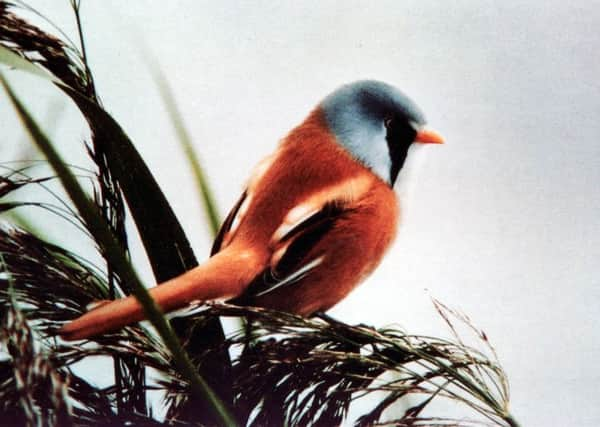Water pheasantis really justthe bearded tit


Well this is not quite April Fool’s Day, just a look back in time to what our forefathers noticed in the countryside.
They also considered these birds to be of “no economic value” and so their habitat which were the reedbeds of old Sussex were nearly all destroyed.
Advertisement
Hide AdAdvertisement
Hide AdThis was particularly so around Lewes and Newhaven, also Lancing when the railway line was laid there in 1842. The Fishbourne reedbeds by the old saltmill were also totally destroyed in about 1860. The Great and Little Deeps on Thorney Island were then being formed by the enclosures of the seawall.
Water Pheasants are of course bearded tits. Down the end of a pair of binoculars they do grow somewhat in size and yes, I suppose there is a fanciful resemblance to a cock pheasant.
Mr John Walpole-Bond in his monumental “A History of Sussex Birds” published in 1938 describes the bird splendidly: “It is unique-looking, very showy, despite its smallness . . . the general colour impression, above, and on the flanks, is tawny of different degrees, from orange-brown to rufous, though the wings are pleasing pattern of rufous, brown black, white, and very pale buff. Below: greyish in parts with a rosy flush on the sides of the breast most marked in the male”.
It breeds today in Sussex, for we have got back quite a lot of our reedbeds especially at Fishbourne and the Deeps. There are said to be about a score of pairs from Pevensey to Thorney Island. I watched the birds flitting among the reed stems and bedraggled heads hunting for seeds, in company with a couple of blue tits which were also reeding there.
Advertisement
Hide AdAdvertisement
Hide AdThey look little more than the fluttering long leaves of the reeds, so they are wonderfully camouflaged.
They utter a silvery call note as they fly about and then land again. In recent years in Sussex young have been fed as early as the first week of April which is exceptional. Normally the eggs hatch at the end of April.
During the century before last bearded tits were an expensive addition to the indoor aviary, where they were kept almost as exotics among budgerigars.
They were even exhibited as oriental birds in high class continental exhibitions of caged birds when this cult was fashionable. Otherwise, gunners got good prices for specimens for the glass dome.
Advertisement
Hide AdAdvertisement
Hide AdWalpole-Bond records some obtained in Amberley Wildbrooks, and a pair shot by one Sergeant Carter sometime before 1849, at Fishbourne. By 1890 they were extinct here.
Reedlings, as they were called in Norfolk, hung on in East Anglia by the skin of their tails, where today about a hundred pairs at least breed all over the Broads.